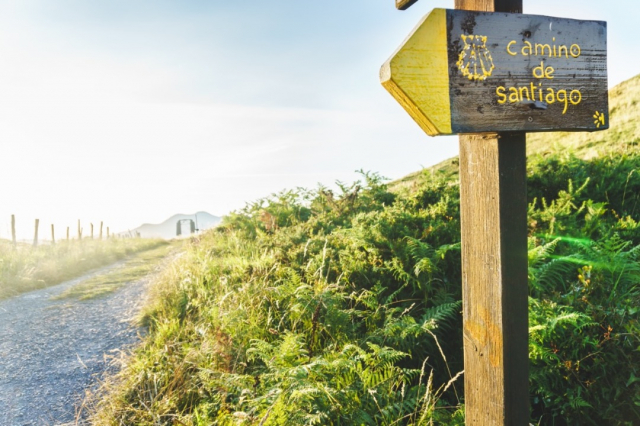Why is it said that the Camino de Santiago is the "main street of Europe"?
This phrase has some centuries of history, but its origin remains unknown. This is its meaning
When we take a look at the figures of pilgrims in recent years, we can take several surprises. During the years prior to the pandemic, the 300,000 pilgrims were widely exceeded. In 2021 almost 180,000 compostelanas were delivered, which seems a very considerable decrease, but it is still an incomparable figure with the 13 pilgrims documented in 1987.
Although the numbers of foreign pilgrims have currently been reduced, due to the difficulties of traveling since the pandemic, the percentage of foreigners remains revealing. In 2021, 32% were not Spanish. Portugal, Germany, Italy and France are the countries of origin of a large number of pilgrims. This shows how the Camino de Santiago has connected pilgrims from all over the world, especially from Europe.
The history of this expression
The reference to the Camino de Santiago as the "Main Street of Europe" is a metaphor for the importance of this route. It is a fundamental connection throughout Europe, religiously and culturally, but also politically and economically. In 1987 the Camino de Santiago was declared the first European Cultural Route, and in 1993 it was declared a World Heritage Site by UNESCO.
There is no specific documented reference on the beginning of the use of this expression. It is related to some medieval king who uses similar expressions, although not exactly this one. There are others who attribute it to Carlos V of Germany, I of Spain. The German playwright Goethe said that "Europe was made on a pilgrimage to Compostela", to refer to the feeling of unity created by Christianity and which is reflected in its maximum expression in the pilgrimage to the Cathedral of Compostela.
Which route was the "main street" of Europe?
It is clear that during the Middle Ages and the Modern Age not all the routes that are carried out today were popular. At that time, the main communication to Compostela was through the French Way, which is in fact the route that was initially declared a Cultural Route and a World Heritage Site.
Currently, this denomination includes the Camino del Norte, in reference to four other routes that make up the roots of this pilgrimage. Since 2015, the Camino Primitivo, the Camino Costero, the Camino Lebaniego and the Camino Vasco del Interior have been included. With this classification, other routes with a lot of links with other European nations, such as the Portuguese Way or the English Way, are left aside.
The Camino de Santiago beyond borders
Although today the reasons to do the Camino de Santiago are much more than the religious motivation of yesteryear (and that there are still those who currently maintain), they continue to be shared throughout the European territory. Whether for cultural interest, as a sporting objective, for communion with nature, you will surely find another pilgrim from anywhere who understands what has led you to embark on the Camino.
The Camino de Santiago is an experience that knows no borders, and it is not something new. Pilgrims from all over Europe have shown over the centuries that this experience is something that unites us beyond geopolitical boundaries and that it will continue to develop regardless of trends.
Routes
Blog
 ¿Vas a hacer el camino de Santiago? Cuida tus pies antes y después
¿Vas a hacer el camino de Santiago? Cuida tus pies antes y después
 5 razones por las que contratar un seguro de viajes
5 razones por las que contratar un seguro de viajes
 Formas de hacer un logotipo
Formas de hacer un logotipo
 La importancia del registro de llamadas durante tu viaje por el Camino de Santiago
La importancia del registro de llamadas durante tu viaje por el Camino de Santiago
Information
Points of interest
Cities & Towns | Hostels | Lodgings | Restaurants | Saddlery | Doctors | Points of interest | Bikes workshop
Contact us | Privacy policy | Cookies policy | | Terms of use | Authorship | Web Map | Consentimiento
© Copyright LA VOZ DE GALICIA S.A. Polígono de Sabón, Arteixo, A CORUÑA (ESPAÑA) Inscrita en el Registro Mercantil de A Coruña en el Tomo 2438 del Archivo, Sección General, a los folios 91 y siguientes, hoja C-2141. CIF: A-15000649

